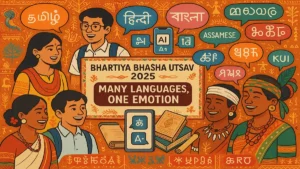In a significant nod to India’s rich heritage of craftsmanship and artistry, the Cuttack Rupa Tarakasi, more widely known as Silver Filigree, has recently been awarded the Geographical Indication (GI) tag by the Geographical Indications Registry in Chennai. This recognition, sought by the Odisha State Co-operative Handicrafts Corporation Limited and supported by the Department of Textile and Handicrafts, Government of Odisha, places Cuttack’s Silver Filigree on the map as a unique and protected form of art.
A Journey Through Time: The Legacy of Silver Filigree
Silver Filigree, or Tarakasi, is a testament to the unparalleled skill and precision of artisans in Cuttack. The craft’s history traces back to over 500 years ago, with influences spanning from Persia to Indonesia, and finally making its home in Cuttack, Odisha. This intricate form of metalwork involves twisting thin silver wires to create delicate and complex designs, often used in jewelry and decorative items. Historical evidence suggests that the art of filigree was present as early as 3500 BCE in Mesopotamia, evolving over millennia and across continents to become what it is today in Cuttack.
Maritime Trade and Cultural Exchange: The Connection Between Odisha and Indonesia
The GI filing documents reveal fascinating insights into the craft’s journey to India’s eastern shores. Historians believe that Tarakasi work reached Cuttack through maritime trade routes from Persia, via Indonesia. This theory is supported by the striking similarities between the filigree work found in Cuttack and Indonesia. Literary works like the story of Ta-Poi further underscore the ancient maritime links between Kalinga (modern-day Odisha) and Indonesia, suggesting a shared heritage of craftsmanship and trade.
Celebrating India’s Diverse Heritage: Other Crafts Joining the GI League
The recognition of Cuttack’s Silver Filigree is part of a broader effort to protect and promote India’s diverse artisanal heritage. Alongside Tarakasi, other crafts such as Banglar Muslin, a fine cotton fabric from Bengal, Narasapur Crochet Lace from Andhra Pradesh, and the Kutch Rogan Craft have also been honoured with the GI tag. Each of these crafts tells a unique story of tradition, skill, and cultural exchange, contributing to the rich tapestry of Indian heritage.
The Future of Traditional Crafts: Preservation and Pride
The awarding of the GI tag to Cuttack’s Silver Filigree and other traditional crafts is not just a recognition of their historical significance but also a step towards preserving these ancient techniques for future generations. It ensures that these crafts remain protected from imitation, fostering a sense of pride and continuation among the artisans dedicated to their craft.
As India continues to celebrate and protect its cultural heritage, the recognition of these crafts underlines the importance of traditional skills in the modern world. It is a reminder of the country’s rich artistic legacy and the global relevance of its artisanal treasures.




 Bhartiya Bhasha Utsav 2025: Celebrating ...
Bhartiya Bhasha Utsav 2025: Celebrating ...
 Starlink Internet: Revolutionising Globa...
Starlink Internet: Revolutionising Globa...
 Google 2025: Top Searches by Indian User...
Google 2025: Top Searches by Indian User...







